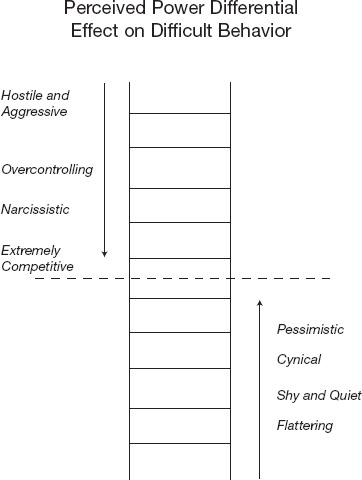CHAPTER 7
WORKING WITH DIFFICULT SUBORDINATES
![]()
“Power corrupts, but lack of power corrupts absolutely.”
—Adlai Stevenson, New York Times interview (1987)
Although the consequences of yelling back at your boss may be immediate and drastic, the consequences of behaving badly to your subordinates are often more subtle and may take place over a longer period of time. Difficult subordinates have their own ways of causing trouble.
In general, people higher on the organizational food chain feel freer to vent negative emotions such as anger. Sometimes they take out their own frustrations with their own managers on you, because you're a relatively safe target. People lower on the food chain, however, are more likely to exhibit passive-aggressive behavior. The age-old tactic known as “malicious obedience,” or doing exactly what you're told in a way that makes failure inevitable, is a classic response.
There's the power people have (or don't have), and there's the power people believe they have. Perceived power trumps real power in its behavioral effects. Figure 7-1 shows typical difficult-behavior patterns as influenced by power distance. You probably know people who don't fit this mold. What this tells you is that those individuals feel more or less powerful than the hierarchy says or that you perceive. The type of difficult behavior being exhibited, as you will see in the different case studies, always gives you important clues into the other person's psyche.
FIGURE 7-1. THE EFFECT PERCEIVED POWER HAS ON THE TYPE OF DIFFICULT BEHAVIOR.

In general, difficult people who are (or feel they are) powerful are more likely to exhibit the behaviors at the top half of Figure 7-1; difficult people who perceive themselves as weak are more likely to exhibit the behaviors at the bottom half.
Use the five steps in Figure 7-2 to manage difficult subordinates.
- Diagnose the situation in behavioral terms. You don't have “problem employees.” Instead, you have problem behavior. You must describe the behavior, not diagnose what it says about the other person.
- Deal with your contributions. As we've noted, none of us is entirely innocent of blame when a difficult situation arises. Make sure you understand what you're contributing, and if you don't, ask.
- Communicate! Beating around the bush seldom helps. Lay the problem out behaviorally and start working for change.
FIGURE 7-2. ACTION PLAN FOR MANAGING DIFFICULT SUBORDINATES.

- Plan for change. Negotiate directly with the subordinate to create a specific and detailed action plan listing both what you'll do and what you expect the subordinate to do.
- Next steps. If there's movement toward success, be patient. If there's no movement, decide now what you'll do then, and don't bluff.
